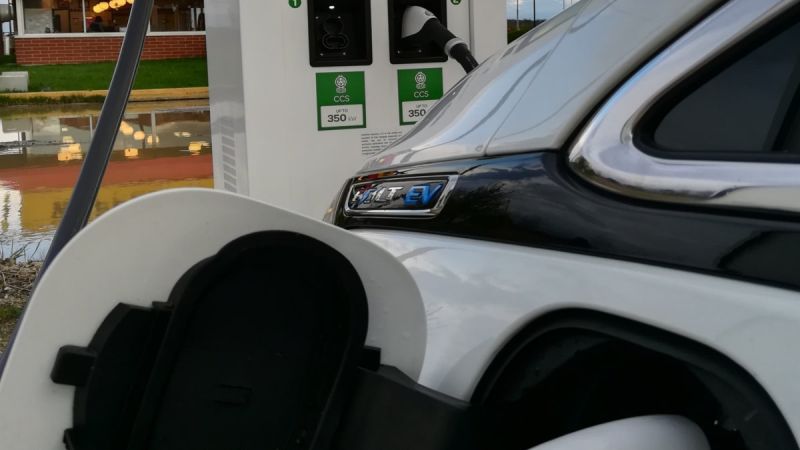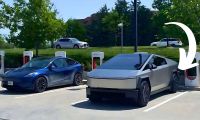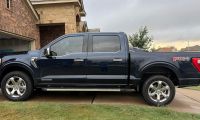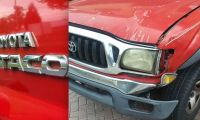Coverage of electric vehicles in the mainstream media could optimistically be described as hit or miss. The stories typically fall into one of two buckets:
1) Elon Musk just tweeted this and Tesla will soon be bankrupt.
2) Electric cars might be okay one day but I experienced an issue so don’t buy one.
A story in the New York Times over the weekend falls firmly into the second category, as a feckless reporter sets off from Los Angeles without understanding the car he’s driving. It’s entitled “L.A. to Vegas and Back by Electric Car: 8 Hours Driving; 5 More Plugged In,” which tells you all you need to know about the underlying intention of the piece.
To extract a positive from the pot luck of gloomy EV observations that follow, the writer does allow for some chinks of light, such as forecasts that electric cars will be much more common on US roads over the next five years and an acceptance that technology is advancing rapidly. For the most part, though, this is a laundry list of cherry-picked inconveniences that are rarely balanced with the many positives, such as waking up to a full charge at home or the myriad performance benefits of an electric car.
Instead, the writer forms the central theme of his article, inconvenience, around his badly planned trip and some poorly researched observations from other travelers en route.
He indirectly throws the Chevy Bolt EV under the bus as well, which might seem inconsequential but needs to be scrutinized, as the rest of the story falls apart when we dig into the details.
Yes, You Can Take Long Trips in a Chevy Bolt EV
Before I make the (open and shut) case for the Bolt EV being perfectly able to make this trip in just a fraction of that charge time, let’s make it clear that you can road trip in this car. Plenty of us document our journeys on YouTube. A Canadian couple went coast-to-coast in a 2017 Chevy Bolt EV before most of us could get our hands on one. See BoltAcrossCanada.com for all the details.
It’s not as smooth to plan as a Tesla, or even as fast to charge as some newer competitors like the Niro EV and Hyundai Kona EV, but you can comfortably cover 500 miles in a day of driving and charge breaks, so it’s undeniably a capable car. Not everyone will want to wait around quite as long as the Bolt EV requires, but the patient and planning sorts among us like that just fine.
On the subject of DCFC, here’s a fast charging issue that Kona Electric and Kia Niro EV owners should know about.
Nor am I some stooge for General Motors, attempting to spin their every electric yarn into gold.
In past articles, I’ve openly said that the Chevy Bolt EV is already outdated and offered constructive criticism to fix it.
The point needs to be made, though, because some arguments against the New York Times article simply suggest that driving a Tesla is the only way to accomplish this trip, which is wrong. A coast-to-coast drive might be open to debate, but this is a 269-mile one-way/538-mile round trip that is frequently completed with ease in a Chevy Bolt EV.
Getting from L.A. to Las Vegas in a Chevy Bolt EV
Here’s the itinerary for this mind-blowingly complicated trip, are you ready?
1. Start with a full charge and drive 177 miles to Baker, CA.
2. Charge on one of EVgo’s 100kW+ units for 20-30 minutes.
3. Drive the remaining 93 miles to Las Vegas, NV.
4. Plug into one of 13 DC fast chargers around the city.
5. Enjoy Vegas!
The observant among us will notice that this is only a one-way trip. How on earth are we going to get back?
Well, assuming you’re spending a little time in Las Vegas – after all, why did you drive there if not? - the Chevy Bolt EV is at least 80% charged by the time you set off again. If you stayed more than a few hours, or overnight, it’s at 100% state of charge.
In any case, all you would need to do is stop at that same Baker EVgo location. Admittedly, the return leg stop might be 30-40 minutes to get a little extra juice for the 177 miles back to L.A. Or you might choose to shorten the Baker stop and add a second brief top-up just outside L.A. before heading home.
Either way, your total charging time in transit barely reaches 2 hours, let alone the 5.5 hours that the article in the New York Times leans on for its deeply misleading headline.
Best of all, you don’t have to take my word or crude calculations for it. For proof, we can look to a real-world demonstration by the News Coulomb channel on YouTube, where a Bolt EV makes a very similar journey without even stopping to charge.
Watch Driving from LA to NY on a Chevy Bolt and Subscribe to Torque News Youtube Channel for Daily Automotive News and Analysis.
This trip occurred last year and sees the driver arrive with 31 miles to spare. Although it begins on the edge of Los Angeles, the remaining miles would get you into the city proper and, don’t forget, this journey involves no charge stops at all as the Baker EVgo site was not yet operational.
Now that Baker EVgo is up and running, not to mention another four stalls at a ChargePoint site going in down the road, that quick rest stop of 20-30 minutes will easily give the Chevy Bolt EV a comfortable top-up to take it on to Vegas.
The Charging Network Is Not Perfect
I have no qualms about admitting that life is different with an electric vehicle.
Close to home it makes life much easier, as you never have to visit a gas station again. On the road, for now, it certainly requires an extra level of planning.
On long trips, it is inevitably less convenient than stopping for gas. For non-Tesla electric cars like the Chevy Bolt EV, there are still some tough gaps as you travel coast-to-coast and many rural areas that lack any kind of charging infrastructure.
Even in a Tesla, with the company’s seamless integration of vehicle with infrastructure and Superchargers reaching for 250kW, it still takes a bit longer to fill up than a regular car you could buy for tens of thousands of dollars less.
While we're on the topic of Tesla, here are 5 Exciting Events Still to Come for the brand in 2019.
However, that isn’t the challenge posed by the NY Times article, which takes a basic one-stop city hop and turns it into a Homeric saga.
Articles like this, despite its relatively even tone and quiet acceptance of the circumstances, serve only to misrepresent electric vehicles and overlook the massive and rapid development underway.
In June 2018, for example, there were less than 10 active Electrify America sites across the entire United States. At the time of writing, just one year on, there are more than 200 fast charging sites live and almost 300 more expected to be installed by the end of the year.
The takeaway for anyone considering an electric vehicle is not an unequivocal yes or no answer, but instead a reminder to ask real-world owners about their experiences, rather than relying on poorly researched one-off reports.
There are various situations where I, an enthusiastic Bolt EV owner, would not recommend the car to others. The low-emissions alternative in those cases might be a plug-in hybrid, a cheaper used EV, or stumping up a bit more money for a Tesla. Even if it doesn’t end up being right for your circumstances, if you’re considering an electric vehicle please seek out advice rooted in deeper real-world experience.
PHEV vs. BEV? Here's my take on how Chevy Volt sales have impacted the Chevy Bolt EV.
What should not lead the decision-making is a half-baked attempt to venture out into the desert, by someone actively looking for circumstances to fit their naysayer’s narrative.
After all, “L.A. to Vegas and Back by Electric Car: 8 Hours Driving and 45 Minutes at a Big Thermometer” wouldn’t attract this much attention, would it?
So the Bolt is a capable road trip vehicle, but how will the 2020 Chevy Bolt EV compete with the Tesla Model Y? Read my next story for a look at that topic.
- - - - - - - - - -
Check out Torque News on YouTube for extra auto news and come back tomorrow for my latest articles on the Chevy Bolt EV and other electric vehicles.
Steve Birkett is an electric vehicle advocate at Plug & Play EV. Connect with him on Twitter at @Plugandplayev, Instagram and Youtube at Plugandplayev Channel to send him EV news tips.













Comments
Steve If they used an app
Permalink
Steve If they used an app like Chargeway it would been a piece of cake with this Bolt EV trip. It has a trip planner based upon what kind of car you own and lines you up with chargers where you need them along the way.
Exactly Paul, a little
Permalink
In reply to Steve If they used an app by Paul (not verified)
Exactly Paul, a little research goes a long way. Definitely adding Chargeway to my apps to test on road trips this summer, thank you.
Why doesn’t Chevy Bolt have a
Permalink
Why doesn’t Chevy Bolt have a built in navigation that determines vehicle range in real time and gives the driver options on nearby charging stations?
Google Maps on Android Auto
Permalink
In reply to Why doesn’t Chevy Bolt have a by Sean (not verified)
Google Maps on Android Auto or Apple Carplay cover 95% of nav requirements. They're more up to date and easier to customize than OEM navigation. For those instances when coverage is limited, OnStar and WiFi hotspot cover the bases.
This is the worst argument
Permalink
This is the worst argument that people have against electric cars.
“What if I want to drive across the country?”
Well, when was the last time you DID road warrior? Yeah, never!
Why would not fly or rent a car?
To argue that it’s more difficult to do something in and electric car that you never did with a gas car is stupid!
Well, if they travel for
Permalink
In reply to This is the worst argument by Chris (not verified)
Well, if they travel for business or urgent personal matters where speed is of the essence, a flight is clearly the way to go. If it's vacation, then the whole point of a road trip is to plan a leisurely route, see the sights, and stay in interesting places overnight, right? So an EV fits nicely into that planning and relaxation!
What made this particularly
Permalink
What made this particularly bad is that this NYT writer claims to have been guided by an EVgo rep. They must not know about the Electrify America chargers in Las Vegas.
You use the app and find a
Permalink
You use the app and find a charger that is working, right where you need it. But, you may need to wait for the car(s) in front of you to finish their charge. Even if you only need a 30 minute charge, it may take over an hour to get it. There are more and more chargers, but more and more EVs. The turnover is not 5 minutes, as it is in a gas car.
In this particular case, the
Permalink
In reply to You use the app and find a by Bill Lappen (not verified)
In this particular case, the writer noted that he always got straight on a charger. Obviously, there are times when you might have to wait, but the apps do typically show you whether a charger is available and new DCFC sites being installed often have a minimum of four stalls. Between the additional sites, extra equipment at new sites, and the ability to check en route, it should be possible to arrive and plug in right away i80-90% of the time.
And the turnover on road trips is longer than the 5 minutes gassing up, clearly, but the daily driving saves that 5 mins every week (or however often you have to refuel the gas car to meet regular driving habits). The EV driver only has to plug in at home and wakes up to a full charge in the morning, no time wasted at the pump in everyday life. Cumulatively, that weekly filling stop adds up quickly.
It depends on the number of
Permalink
In reply to You use the app and find a by Bill Lappen (not verified)
It depends on the number of stalls and how fast your car charges. In January I was driving from San Diego to San Luis Obispo and stopped at Thousand Oaks for lunch and a charge. All 20 or so Tesla stalls were occupied and there was a short line. I got in line and within 2-3 minutes enough slots opened up for me to get one. A Tesla supercharging session is typically 15-45 minutes so with 20+ stalls sometime was leaving an average of every minute or two. Since then Tesla has sped up the charge times via software update and some physical changes to the stations. Generally I never have to wait but on those rare occasions, it doesn't take long.
Conversely when traveling in Oregon with our Bolt I arrived just a few minutes after another Bolt who took the one and only 24 kw (slow, "fast" charger). I knew he would be there for at least an hour and a half.
The answer is still the same though: more and faster charging as more as more EVs hit the road.
What a refreshing take and
Permalink
What a refreshing take and rebutal on a somewhat skewed article that the previous writer appears he had no idea of what he was doing. I have no issues with my Bolt planning or making long drives. Had he taken a few moments to download the PlugShare app, it clearly would’ve shown him when and where he could charge for this kind of trip. Not to mention how much would be gained from regen alone.
It was definitely an
Permalink
In reply to What a refreshing take and by Ted (not verified)
It was definitely an incredibly long and winding way to make excuses for a poorly-planned road trip. Thanks for sharing your perspective as a fellow Bolt driver!
The article is fine. The fact
Permalink
The article is fine. The fact you need to plan is the point, and noting not all charges will be available and that multiple chargers use the same power source need to be noted. EVs take more planning and aren't nearly as convenient as ICE for trips. I love my Bolt but I don't have blinders on
While I do agree that it is
Permalink
In reply to The article is fine. The fact by Garrett Moffitt (not verified)
While I do agree that it is valid to show that you need to do more planning and the EVs aren't as convenient, I'm not sure there is all that much more to do...
I mean, when we get ready for any longer trips, we plan. We choose a route (direct or scenic? want to stop at a particular place(s) on the way?), pick a hotel, sometimes a place to eat.
The only difference with an EV is that you are also adding a place(s) to charge.
Is it more planning? Yes. Is it much more? I don't think so...
I am guessing they chose the more complicated route for one of two reasons (or both). To show the more extreme problems you can have, which is fair, but it would have been nice to point out that it can also be much easier. Or, because he was planning with an EVGo person who didn't want to use the Electrify America chargers. ;-)
I get the concept, but I think it's another example of showing the extreme to prove your point.
I think a balanced article, showing both sides, would still have gotten the point across.
The writer went to a level 2
Permalink
In reply to The article is fine. The fact by Garrett Moffitt (not verified)
The writer went to a level 2 charger in Vegas to recharge for an immediate return trip, rather than seek out one of 13 DC fast chargers around the city. That's where the deliberately provocative and unrepresentative "5 hours plugged in" in the title comes from.
Had he encountered ICEd stations, broken units, wait times at the charge station, or any other number of potential issues, I'd say fair observation. But screwing up that most basic element of planning, whether through lack of research or deliberate misdirection to fuel the story, puts this firmly in the category of user error.
Yeah, and I think it could
Permalink
In reply to The writer went to a level 2 by Steve Birkett
Yeah, and I think it could even have been OK if he was open about that type of thing... They could have said something like, "normally you can stop in Baker and charge for 30 minutes to get enough to get to Las Vegas, but let's assume for this trip that we didn't start out with a full charge, as this trip was a spur of the moment call... And let's say that the Baker charging spots are full and/or not all working, so we had to wait an extra 45 minutes..." etc.. I think you can come up with some semi-reasonable scenarios to show where there still needs to be improvement without making it sound like those situations are standard operating procedure. And I am still confused about the EVGo guy. I would love to hear from him about this trip... ;-)
Quite right, I make plenty of
Permalink
In reply to Yeah, and I think it could by Desi Villaescusa (not verified)
Quite right, I make plenty of road trip videos and I'm not shy about cursing a charging network when they fail us (looking at you, Electrify America!)
I'm more worried about that EVgo rep as the writer seemed to come right back from Vegas and there was no mention after the early reference... did they bury him in the desert?!